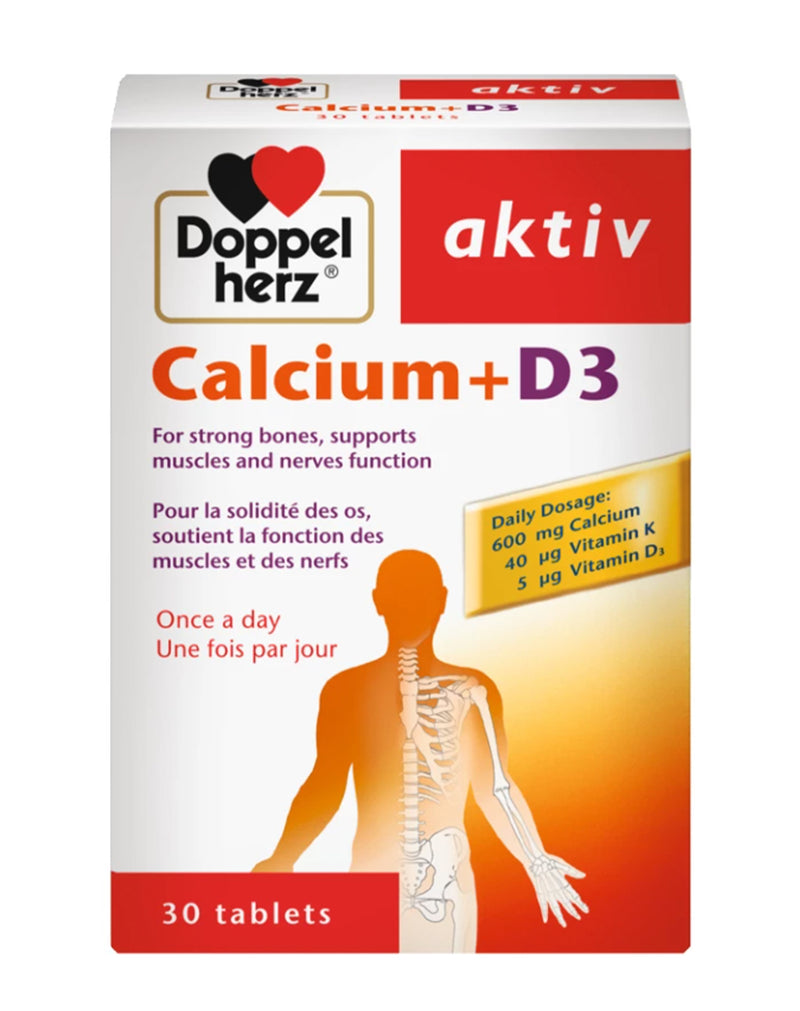
DoppelHerz Calcium Vitamin D3 * 30
Kalçium, Vitaminë D3.
30 tableta
Besides its obvious function in the structure and the robustness of these tissues, Calcium is also involved in muscle contraction, neurons activity and blood coagulation.
As strong and solid as it is, the bone tissue is not a fixed but a dynamic structure: old bone tissue is constantly replaced by new one. This is achieved through active bone degradation, release of the Calcium in the blood circulation and reabsorption in newly-formed bone matrix.
Several factors can negatively influence circulating Calcium levels: unbalanced diets, age, lactation, menopause, use of glucocorticoids as well as of laxative. A small portion of Calcium is also naturally excreted in the urine. To compensate for decreasing blood Calcium levels, bone is degraded to release Calcium. This is why a constant supply of Calcium through the diet is primordial.
Not only the total amount of ingested Calcium is important to keep strong bones, muscles and nerves: from the food to the bones, Calcium follows a complex path. Without the help of two vitamins this would not even be possible.
- Fom the food to the blood: dietary Calcium is absorbed at the level of the intestine, by a specific transporter which is stimulated by Vitamin D3. This vitamin is further on responsible for the blood balance of Calcium and Phosphate meant for bone formation.
- Fom the blood to the bone: circulating Calcium is brought to the bone matrix by proteins like osteocalcin. This is possible only if osteocalcin has been activated through a reaction dependent on Vitamin K.
Take 1 tablet daily at meal with enough liquid.
Do not chew.
Tablets can be divided into halves, if necessary.










